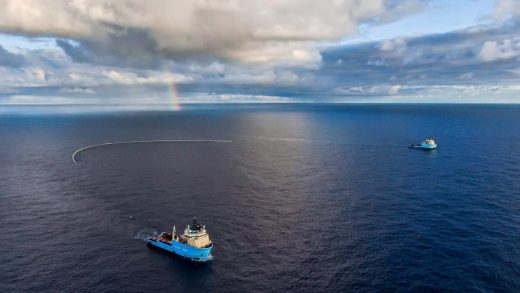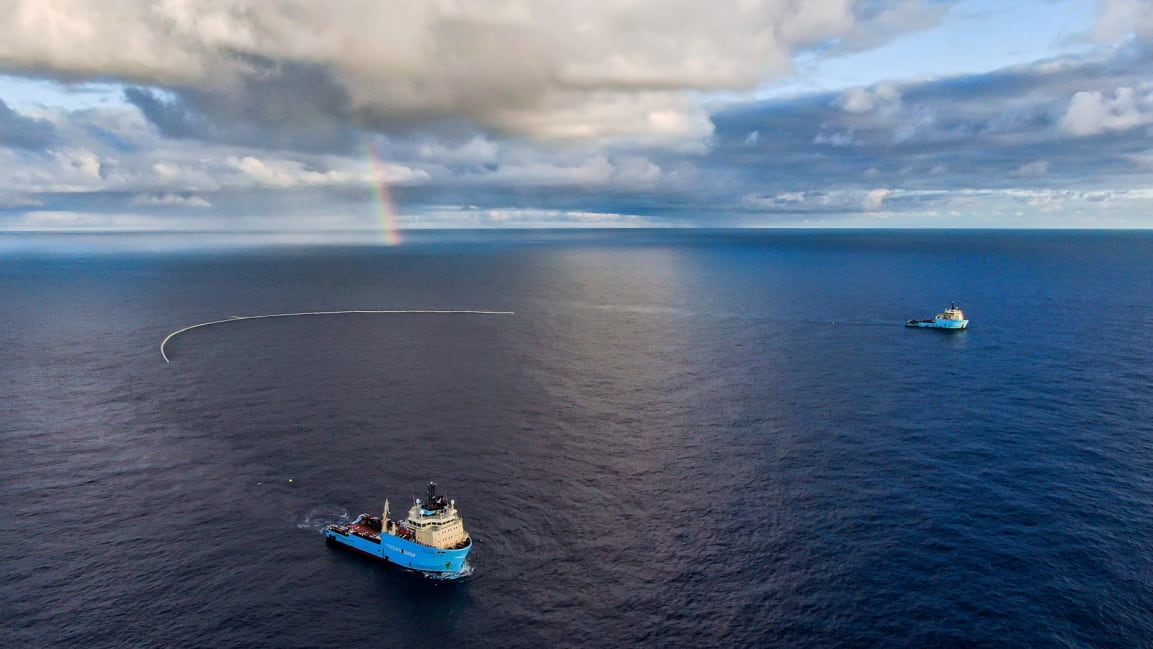What’s the best way to get plastic out of the ocean?
On board a ship that just arrived in the British Columbia town of Victoria, northwest of Seattle, instead of a haul of fish, there’s more than 46,000 pounds of plastic trash, following another 17,000 pounds that arrived six weeks ago. It’s an infinitesimally tiny amount compared to the problem—roughly 11 million metric tons (or more than 24 billion pounds) of plastic end up in the ocean every year—but it’s a proof of concept for The Ocean Cleanup, the nonprofit that just finished the latest trial of its technology.
“We’re attacking the plastic problem on two fronts,” says Henk van Dalen, ocean director at the Netherlands-based organization. “One of them is closing the tap by making sure that plastic doesn’t go into the ocean [from rivers]. The other part of it is cleaning up the legacy of plastic which is already in the ocean.”
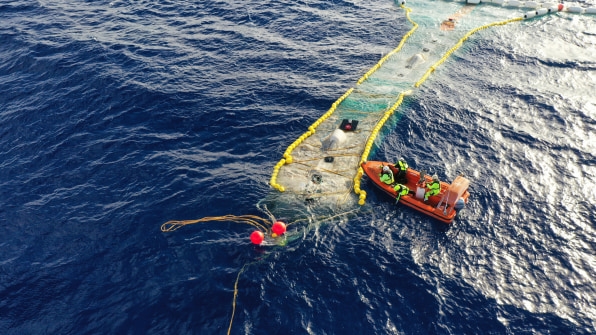
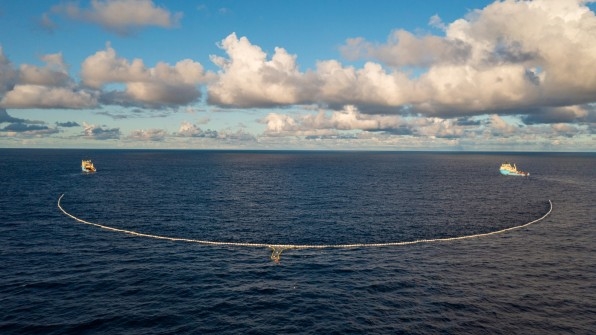
“That means you then are not solely dependent on all the environmental conditions, but you can actually propel the system forward a slight bit faster, so you can capture plastic more effectively,” van Dalen says. The boats pulling the system can also travel to areas with the highest density of trash, and the design also makes it possible to cover a larger area. In the latest test, the boats were 500 meters apart. The team plans to triple that distance in the next iteration. Otherwise, van Dalen says, it would be necessary to have a very large number of these systems in operation. If the next design works as intended, the engineers believe that 10 of the systems could clean up the Great Pacific Garbage Patch.
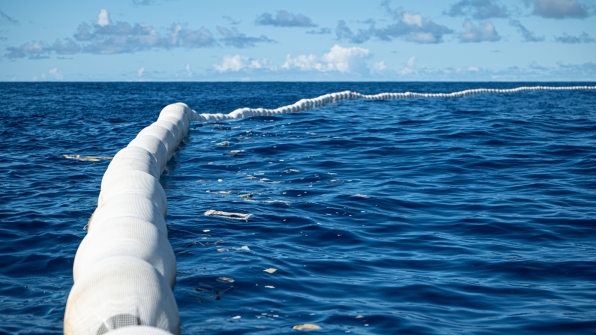
It’s a relatively simple design, to the point that one critic argued that the nonprofit has spent millions of dollars to invent trawl fishing. But trawl fishing also poses environmental challenges, since a net that’s being swept through the ocean can catch marine animals along with plastic. The Ocean Cleanup has been studying the impact on marine life, and had third-party biologists and zoologists on hand to assess any marine life that were caught and return any live animals to the water. The organization says that the bycatch—the extra marine life it caught beyond the plastic—was “minimal.”
Still, some critics argue that the approach is too potentially harmful to continue. “I believe there should be an immediate moratorium on surface skimming plastic in the open ocean and other remote areas,” says Rebecca Helm, an assistant professor at the University of North Carolina, Asheville, who has written about the risks of ocean cleanup. “We don’t know enough about the ecosystems. We have reason to believe there could be serious ecosystem consequences that merit precaution.” Because the organization is also now using ships running on fossil fuels, instead of the initial passive system, carbon pollution is another problem.
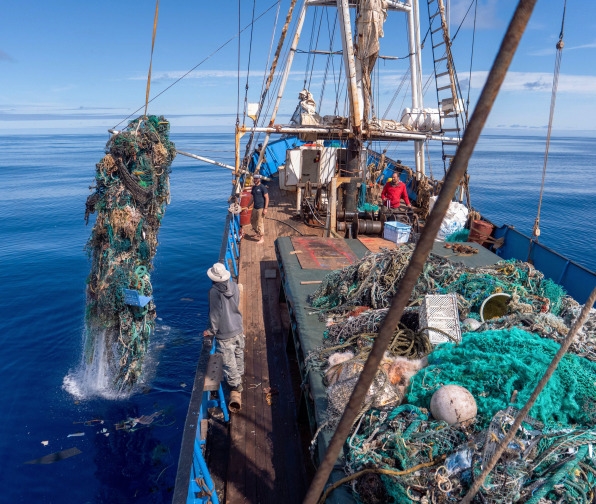
Another nonprofit, Ocean Voyages Institute, takes a different approach, focusing primarily on pulling up “ghost nets” left behind by the fishing industry. The organization works with volunteer sailors who put GPS trackers on the ghost nets as they encounter them, and then uses sailing cargo vessels—ships that rely mostly on wind power—to travel to those areas, hook the nets, and slowly pull them out of the water. Last year, the organization collected 340,000 pounds of fishing nets and other plastic waste.
“With all of the nets that we’ve removed, we’ve never found any live creatures,” says Mary Crowley, founder and executive director of Ocean Voyages Institute. “We’ve found skeletons of sea turtles and swordfish.” Removing the old nets is critical, she says, because they can so easily trap animals. The group also sometimes removes consumer plastic trash, like plastic bottles, by hand—something that’s obviously very difficult to scale up. (The nonprofit plans to also begin testing some other tools for collecting smaller plastic trash in some areas.)
Crowley argues that any amount of cleanup is helpful, even if the task seems Sisyphean. “People can feel that that’s insignificant compared to the huge volume of plastic that ends up in the ocean every year,” she says. “But it’s not really insignificant when you think about saving whales and dolphins and turtles.”
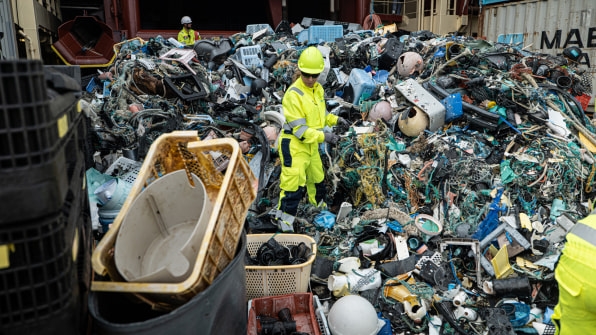
Solving the plastic problem will require rethinking how the material is used in the beginning, so it isn’t landing in the ocean in the first place. That means a long list of changes, from consumers and companies moving away from single-use plastic and governments making brands responsible for the trash they create to better recycling infrastructure, especially in the developing world. The fishing industry needs to stop leaving nets behind in the water. And technology can also help collect plastic before it flows from rivers to oceans, as in another project from The Ocean Cleanup. But there’s an enormous amount of plastic already in the ocean, so solutions like these—or others that may later be developed—are also important. Each shipload of plastic trash is also a visceral reminder that the whole system has to change.
(49)

